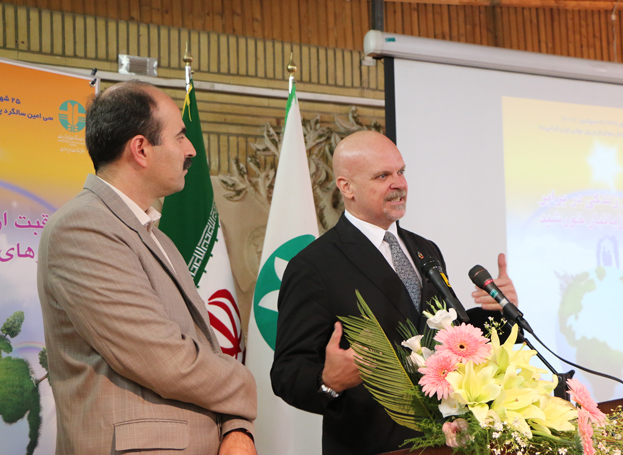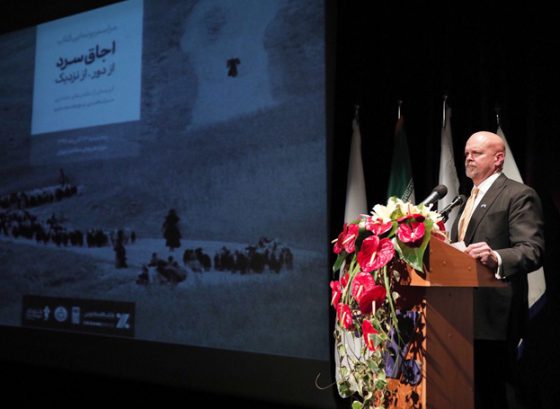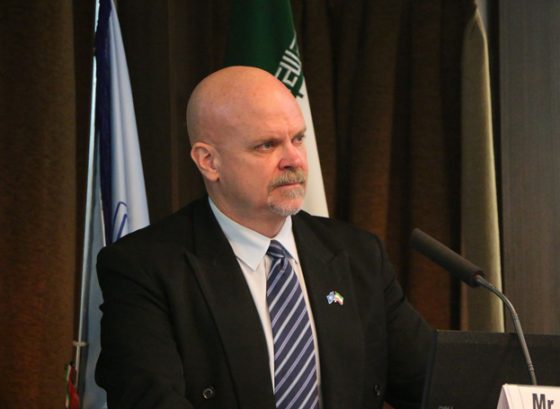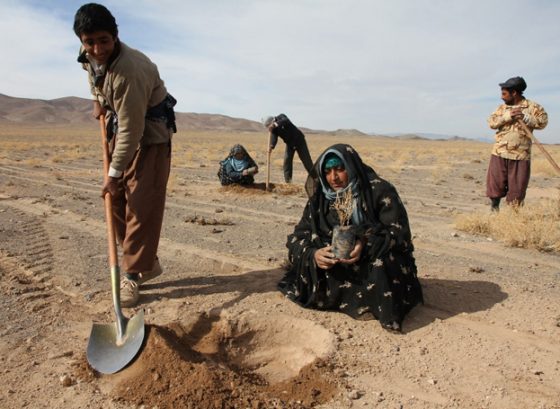The Montreal Protocol: Closing the Hole in the Ozone Layer

The 16th of September 2017 heralds the 30th Anniversary of the Montreal Protocol – an international treaty which aims to repair and protect the Earth’s ozone layer. To celebrate this special occasion and the immense significance of this Protocol, Iran today – one day later – hosted an event at the Department of Environment focusing on this year’s theme of “caring for all life under the sun.”, AVA Diplomatic reports.
Addressing guests at today’s event, Mr. Gary Lewis, UN Resident Coordinator and UNDP Resident Representative, spoke about the Montreal Protocol’s success. He referred in particular to the fact that there has been an almost 100% phasing-out of ODSs. Consequently, after years of depletion, the ozone layer is beginning to thicken.
Mr. Lewis described the significant role Iran has played in countering ozone depletion. Iran established an office for the protection of the ozone layer in 1994, after joining the Vienna Convention and the Montreal Protocol. Iran has, according to Mr. Lewis, demonstrated regional best practices through the successful programmes carried out by its National Ozone Unit. The success of this unit has been enhanced by strong and willing collaboration between the unit, the Department of Environment, international agencies such as UNDP, UNIDO and UN Environment and the support from the Government of Germany.
This cooperation would be extended under a new project due to start at the end of 2017. Mr. Lewis also called upon Iran to join the Kigali Protocol. This is the latest effort of the global community to counter ODSs.
Also speaking at the ceremony, the newly appointed Vice-President of the Islamic Republic of Iran and Head of the Department of Environment, Dr. Isa Kalantari, complimented the success of Iran’s Ozone Project. Mr. Kalantari stated, “We hope that the success of this project will be a milestone in the implementation of national programmes so that we can deal with many environmental problems such as waste, soil degradation, waste water and the protection of wildlife.”
The ozone layer is crucial to the survival of planet Earth. Why? Because it is a layer in the Earth’s stratosphere which absorbs most of the ultraviolet radiation reaching Earth from the sun. In the 1980s, scientists discovered that a hole in the ozone layer above Antarctica was widening. International alarm bells began to ring. Immediate efforts began by the international community to set about repairing the hole and preserving the ozone layer.
On 16 September 1987, the Montreal Protocol on Substances that Deplete the Ozone Layer was unanimously ratified by 197 countries. The treaty’s objective was to cut the production and consumption of chlorofluorocarbons (CFCs) and other ozone-depleting substances (ODSs). CFCs are known to most of us as coolants in refrigerants and aerosol cans. Climate scientists discovered that the use of these substances were in large part to blame for the worsening of the hole in the ozone layer.
Referring to the latest revision of the Montreal Protocol which was agreed to in Kigali, Rwanda on 15 October 2016, Mr. Lewis stated that it offers many opportunities to protect the environment by improving refrigeration and air-conditioning systems. “All of this,” Lewis said, “improves energy efficiency, which corresponds to our SDG 7.”
The latest effort to deal with dangerous ODS focuses on hydrofluorocarbons (or HFCs). “Phasing-out hydrofluorocarbons,” Mr. Lewis said, “was agreed to in the Kigali Amendment which took place in Rwanda on 15 October 2016.” Mr. Lewis encouraged the Government of the Islamic Republic of Iran to take the important step of reviewing and then approving this Kigali Amendment to the Montreal Protocol. He stated that it was crucial not just for Iran, but all countries, to collaborate with industry, governmental bodies and civil society to adopt greener technologies.




